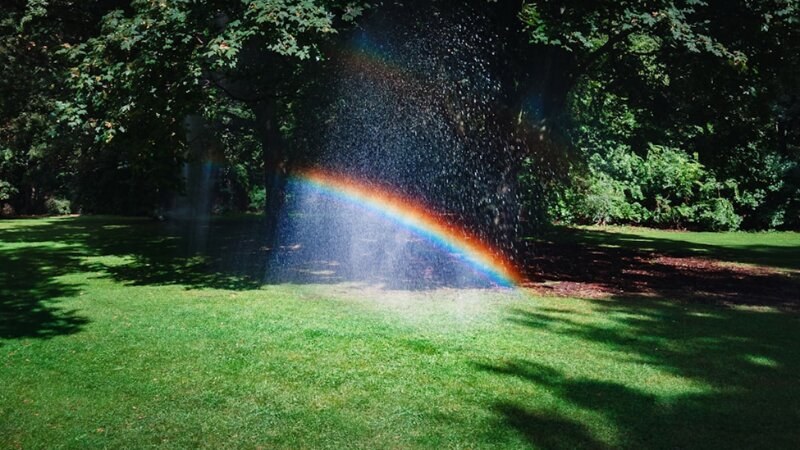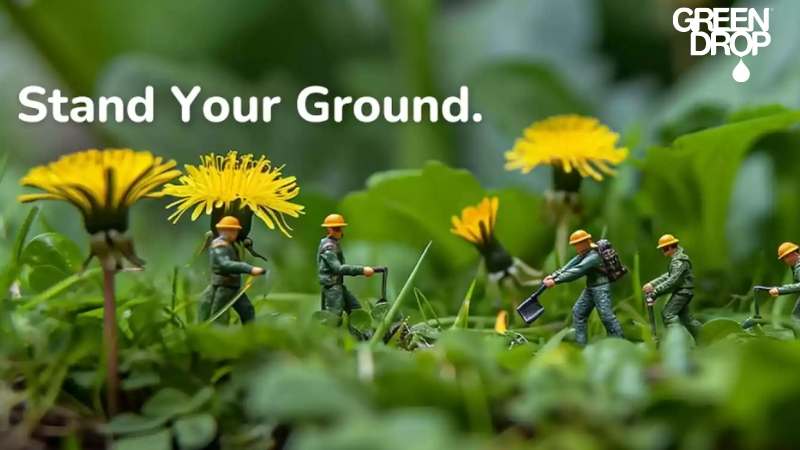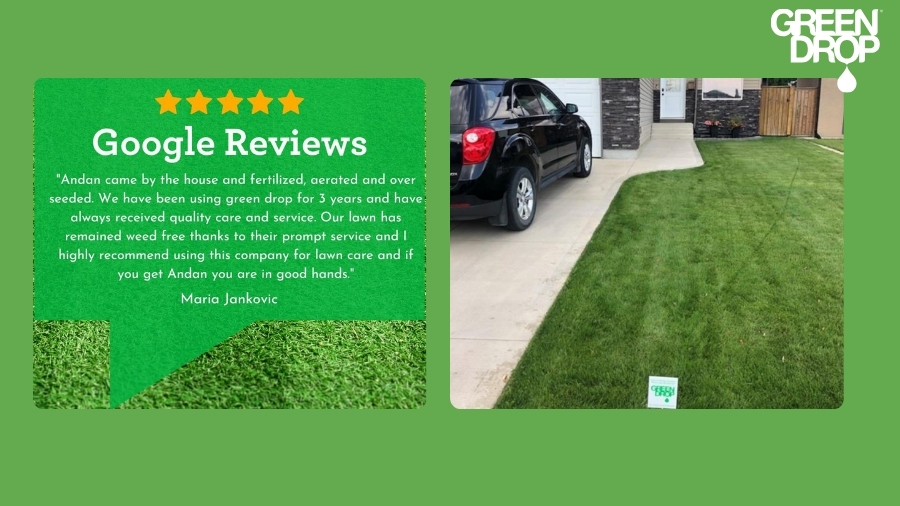What Does Too Much Rain Mean for Your Yard in Edmonton?
Reading time: 5 minutesAs spring showers roll into Edmonton, they often bring more than just May flowers. They can also drench your yard with a bit too much rain.
While your grass might initially love the extra moisture, too much of a good thing can quickly turn your lawn into a soggy mess. Excess rain during the torrential downpours in June and July have the same effect.
Let’s discuss how excess rainfall impacts your lawn and what you can do to keep your yard looking lush and healthy after a heavy downpour.

Understanding the Impact of Excess Rainfall on Your Lawn in Edmonton
1. Fungal Frenzy
When it rains for a couple of days, and there’s no way for the water to drain, your lawn can quickly become a hotbed for fungal growth. Mushrooms might start popping up like unwanted guests, and diseases like brown patches and dollar spots may begin to plague your precious turf.
The signs of fungal damage are pretty clear: mushrooms sprouting on your lawn, discoloured patches or rings, and areas where the grass is thinning or dying.
2. Nutrient Knockout
Let’s say you had your lawn fertilized a few days back. This rain pretty much came out of the blue. Excess rain can wash away vital nutrients, leaving your lawn pale and weak. Saturated soil leads to runoff, causing essential nutrients and fertilizers to be flushed out before your lawn can absorb them.
You can identify nutrient loss if your grass is yellowing or turning pale and if you notice patchy growth and thinning turf. To replenish lost nutrients, you need a balanced fertilizer.
3. Weed Invasion
While your grass might love the rain, weeds like dandelions and clover love it more. They sprout up eagerly after heavy rainfall, taking advantage of the weakened turf. Once weeds establish themselves, they can quickly spread and choke out your grass.

4. Shallow Root Syndrome
Grass plants don't need to dig deep to find water when the soil is saturated. This can lead to shallow root systems that weaken the lawn and make it more susceptible to drought once the rain stops.
To encourage deeper root growth, aerate your lawn to improve water absorption. Deep watering techniques can also help promote strong, deep root systems. Water your lawn deeply but less frequently, allowing the soil to dry out between watering sessions. This will encourage roots to grow deeper in search of moisture, making your lawn more resilient during dry spells.
Not sure how to water, right? Check out our blog, Proper Watering for Your Lawn in Canada.
5. Root Suffocation
Too much water can suffocate grassroots by preventing oxygen from reaching them. Even if your grass looks lush and green initially, prolonged waterlogging can lead to wilting or yellowing grass despite wet conditions.
Proper drainage is important to prevent waterlogging and ensure your lawn has access to enough oxygen. Reduce your watering schedule until the lawn dries out. By improving drainage and reducing watering, you can help prevent root suffocation and keep your lawn healthy.
6. Soil Compaction and Lawn Erosion
Heavy rains can compact soil and cause erosion, especially in sloped areas. Compacted soil makes it difficult for grass roots to grow and absorb nutrients, while erosion can leave your lawn looking patchy and uneven. Aerating the soil can help alleviate both soil compaction and lawn erosion by allowing the excess water to penetrate deep into the ground instead of simply running off.
Lawn Care Tips After Heavy Rainfall
1. Assess and Repair Damage
After a heavy downpour, your lawn might look like it’s seen better days. Start by inspecting for bare spots, puddles, and signs of disease.
Bare spots are open invitations for weeds, so reseed or sod them to prevent them from sprouting out more. Standing water can lead to root suffocation and fungal issues, proper drainage is key here. Aerate or add drainage solutions to areas with poor water absorption, giving your lawn a breath of fresh air.
2. Adjust Watering and Sprinkler Schedules
If your lawn's soaked like a sponge after a storm, it's time to hit the brakes on your watering schedule. Reduce or temporarily stop watering until the grass dries out.
Simply stick a screwdriver into the ground to check moisture levels. If it slides in easily, your soil’s still damp, so hold off on watering. This simple trick helps you avoid drowning your turf in excess water and keeps your lawn happy and hydrated.

3. Fertilization and Weed Control
You need to replenish your lawn’s nutrient bank with a balanced fertilizer to ensure steady growth. Be careful not to over-fertilize—less is more when it comes to feeding your grass. While you're at it, keep those pesky weeds at bay with appropriate weed control methods. Next, we have…
4. Aeration and Overseeding
Aeration is like a deep-tissue massage after a heavy rain. It relieves soil compaction and improves root health, helping the grass breathe easier. Follow up with overseeding to fill in thin or bare patches. At Green Drop, we choose a grass seed mix suited to Edmonton’s climate and spread it evenly across the lawn.
5. Proper Drainage Solutions
Install French drains, dry wells, or rain gardens to manage excess water and improve drainage. French drains redirect water away from your lawn, while dry wells give it a place to collect and disperse.
Rain gardens not only soak up excess water but also add a touch of beauty. If you notice low spots where water tends to pool, fill them in and regrade the lawn to prevent future puddling.

Reign in Your Lawn After the Rain!
Too much rain doesn’t have to mean a lawn disaster!
With proper care and drainage solutions, you can make sure your lawn in Edmonton never loses its green. If you're feeling overwhelmed, Green Drop’s Premium Lawn Care package has everything your yard needs to stay in tip-top shape all through the year.
Our team of GreenKeepers will help your lawn reign supreme after the rain. Ready to give your lawn the royal treatment? Book our lawn care services today, and let us handle the rest!

